Dla menedżerów i kierowników biznesowych analiza konkurencji jest najważniejszą częścią ich opisu stanowiska. Muszą znać konkurentów i ich strategie na wylot, aby opracować własne skuteczne strategie marketingowe.
Analiza strategiczna jest kluczowym krokiem w cyklu planowania strategicznego. Każdy strateg powinien mieć zestaw narzędzi analitycznych do dyspozycji. Istnieje jednak wiele technik i narzędzi dostępnych do analizy strategicznej. Jeśli wyszukasz w Google w Internecie, znajdziesz wiele dostępnych opcji.
Czym jest analiza strategiczna?
Najpierw, czym jest analiza strategiczna? Analiza strategiczna może pomóc w odkrywaniu opcji wzrostu, radzeniu sobie z wyzwaniami branżowymi i podejmowaniu lepszych decyzji biznesowych.
Analiza strategiczna to metoda ułatwiająca, badająca, analizująca i mapująca zdolność organizacji do osiągnięcia przyszłego stanu na podstawie jej obecnej rzeczywistości, zazwyczaj uwzględniająca procesy organizacji, technologię, rozwój biznesu i zdolności ludzi.

Musisz spojrzeć poza naszą organizację na zmiany zewnętrzne i myśleć o przyszłości oraz przyszłych możliwościach.
Analiza strategiczna to więcej niż zrozumienie zmian. To przekładanie na konkretne działania poprzez generowanie wyborów, podejmowanie decyzji i włączanie ich do procesu planowania organizacji.
Wybrane narzędzia analizy strategicznej
Tak jak posiadanie odpowiednich narzędzi nie czyni cię automatykiem, posiadanie odpowiednich narzędzi do analizy strategicznej nie czyni cię wielkim strategiem – ale pomagają one w bardziej efektywnym wykonywaniu pracy. Oto lista podstawowych narzędzi do analizy strategicznej:
Analiza SWOT
Analiza SWOT to technika opracowana na Uniwersytecie Stanforda w latach 70. XX wieku i jest często stosowana w planowaniu strategicznym. SWOT to akronim od mocnych stron, słabości, możliwości i zagrożeń. Jest to strukturalna metoda planowania używana do oceny czterech elementów organizacji, projektu lub ryzyka biznesowego. Analiza SWOT to prosta i potężna struktura, która może w pełni wykorzystać mocne strony organizacji, poprawić słabości, zminimalizować zagrożenia i maksymalnie wykorzystać możliwości.
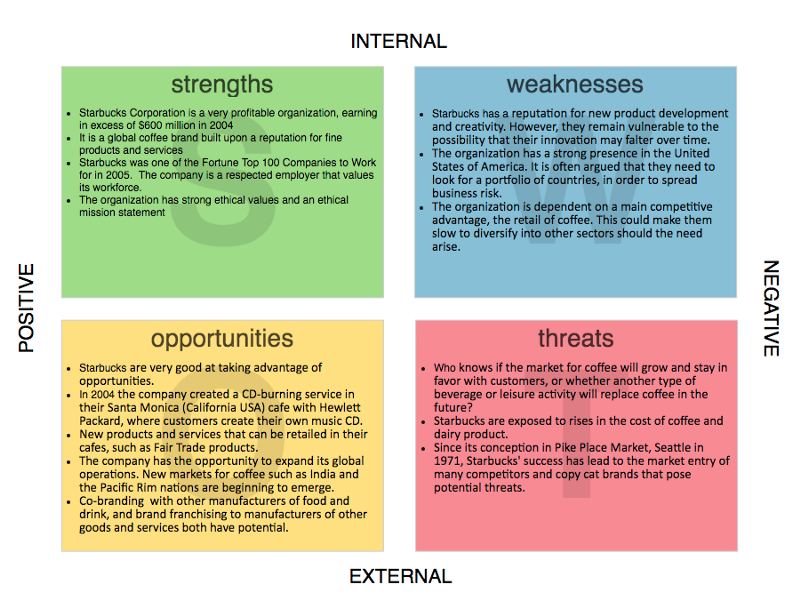
Analiza SWOT to proces, w którym zespół zarządzający określa wewnętrzne i zewnętrzne czynniki wpływające na przyszłą wydajność firmy. Może pomóc nam zidentyfikować, co dzieje się wewnętrznie i zewnętrznie, aby móc planować i zarządzać swoim biznesem w najbardziej efektywny i wydajny sposób.
Analiza PEST
Analiza PEST to przydatne narzędzie do zrozumienia wzrostu lub spadku rynku, a także przydatne narzędzie do zrozumienia statusu, potencjału i kierunku przedsiębiorstwa. PEST to skrót od czynników politycznych, ekonomicznych, społecznych i technicznych, używanych do oceny rynku jednostek biznesowych lub organizacyjnych. Czasami jest rozszerzany o czynniki prawne i środowiskowe i nazywany analizą PESTLE.
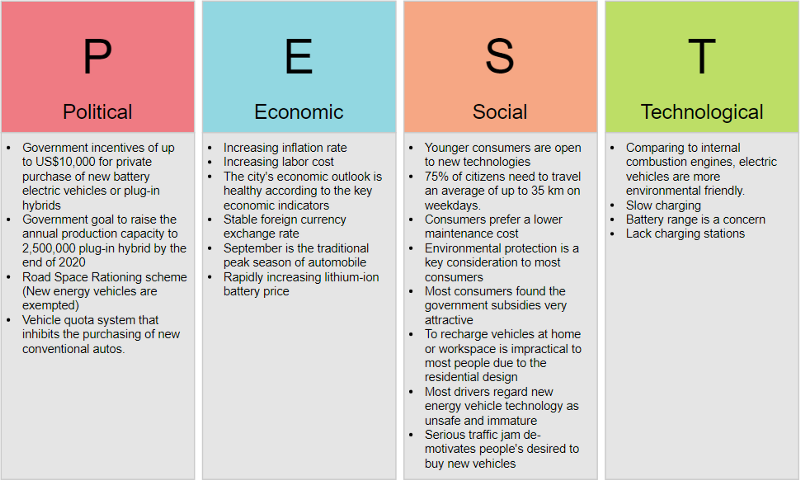
Edytuj przykład analizy PEST online
Analiza PEST prowadzi nas do określenia skutecznych strategii ustalania priorytetów, alokacji zasobów, planowania czasu i map rozwoju oraz formułowania mechanizmów kontrolnych. Dzięki tej analizie możesz zidentyfikować potencjalne możliwości i zagrożenia związane z twoją strategią oraz znaleźć sposoby ich wykorzystania i unikania.
Analiza łańcucha wartości
Analiza łańcucha wartości to sposób na wizualną analizę działalności biznesowej firmy, aby zrozumieć, jak firma tworzy przewagę konkurencyjną dla siebie. Analiza łańcucha wartości pomaga firmie zrozumieć, jak dodaje wartość do czegoś oraz jak wartość jej produktu lub usługi sprzedaje się, przewyższając koszt dodawania wartości, generując w ten sposób marże zysku. Innymi słowy, jeśli działają efektywnie, uzyskana wartość powinna przewyższać koszt ich prowadzenia, to znaczy klienci powinni wracać do organizacji i przeprowadzać transakcje swobodnie i dobrowolnie.
Analiza łańcucha wartości rozpoczęła się w latach 80. XX wieku przez Michaela Portera, a jest to koncepcyjna idea doceniania formy łańcucha wartości. Zaproponował podział organizacji na „główne działania” i „działania wspierające”. Poniższy rysunek dzieli działania sugerowane przez model analizy łańcucha wartości Portera na główne działania i działania wspierające.
Edytuj przykład łańcucha wartości online
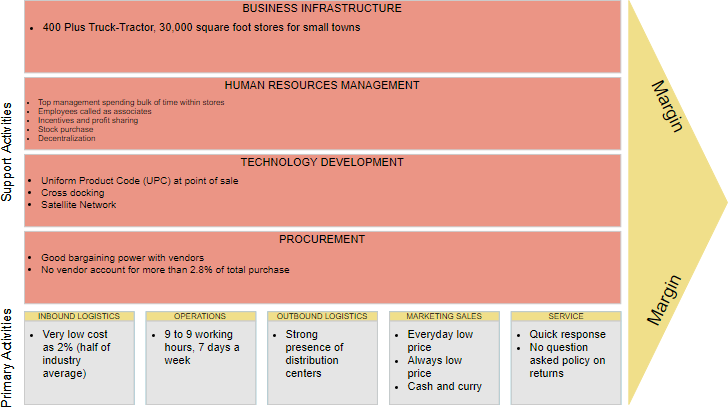
Analiza pięciu sił
Michael Porter opracował model pięciu sił w 1980 roku. Pięć sił Michaela Portera to potężne narzędzie analizy konkurencji, które pozwala określić główny wpływ konkurencyjny na rynku. Jest to szeroko stosowany model biznesowy, który odnosi się do pięciu ważnych czynników, które napędzają konkurencyjną pozycję firmy w branży. Rozważając, jak każda siła na ciebie wpływa, oraz określając siłę i kierunek każdej siły, możesz szybko ocenić siłę tej pozycji i swoją zdolność do osiągania trwałych zysków w tej branży. Dlatego analiza pięciu sił może pomóc ci pozostać konkurencyjnym:
- Znając siłę tych pięciu sił, możesz formułować strategie, które pomogą twoim firmom stać się bardziej konkurencyjnymi i rentownymi.
- Patrząc na możliwości, możesz wzmocnić pozycję organizacji w porównaniu do innych uczestników, aby zmniejszyć presję konkurencyjną i stworzyć przewagę konkurencyjną.
Edytuj przykład pięciu sił online
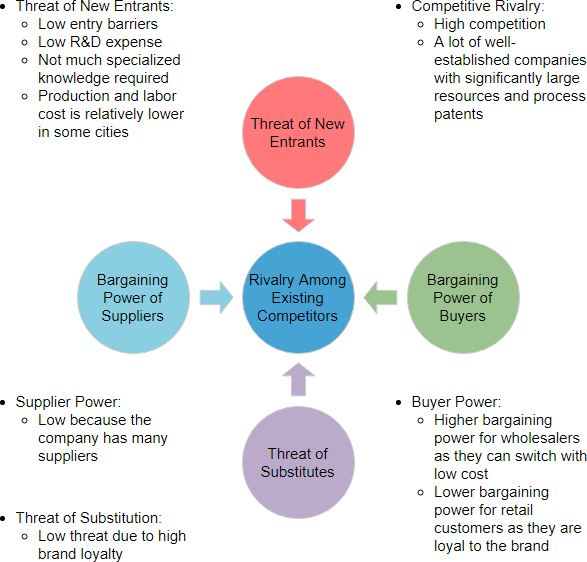
Analiza czterech kątów
Model analizy czterech kątów opracowany przez Michaela Portera to dobry sposób, aby pomóc strategom korporacyjnym ocenić intencje i cele konkurentów oraz przewagi, które wykorzystują do osiągnięcia swoich celów. Jest to przydatna technika do oceny konkurentów i uzyskiwania informacji na temat możliwych zmian strategii konkurentów oraz określenia reakcji konkurenta na zmiany środowiskowe i branżowe. Analizując obecne strategie konkurentów, przyszłe cele, założenia rynkowe i kluczowe zdolności, model czterech kątów pomaga analitykom rozwiązać cztery podstawowe problemy:
- Motywacja – Co napędza konkurencję? Szukaj czynników na różnych poziomach, aby uzyskać głębsze zrozumienie swoich przyszłych celów.
- Obecna strategia – co robi konkurent i co może zrobić konkurent?
- Zdolności – Jakie są zalety i wady konkurentów?
- Założenia zarządzania – Jakie założenia poczynił zespół zarządzający konkurenta?
Edytuj przykład analizy czterech kątów online
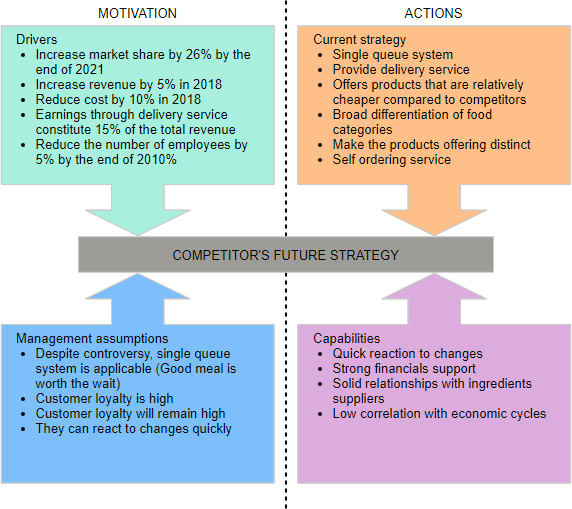
Model Motywacji Biznesowej (BMM)
Jeśli przedsiębiorstwo określa określoną metodę dla swoich działań biznesowych, powinno być w stanie wyjaśnić, dlaczego i jakie wyniki chce osiągnąć. Model Motywacji Biznesowej (BMM)jest symbolem modelowania decyzji biznesowych wspieranym przez OMGjak radzić sobie z ciągle zmieniającym się światem. Firmy mogą kupić narzędzia do modelowania BMM, a następnie stworzyć własny BMM, aby go używać – wypełniając model specyficznymi informacjami biznesowymi firmy. Istnieją dwa ogólne cele:
- Zarejestrować decyzje dotyczące zmian w odpowiedzi na zmiany i sformułować ich uzasadnienie, aby były one możliwe do udostępnienia, uczyć się na doświadczeniach, aby zwiększyć przejrzystość i poprawić podejmowanie decyzji.
- Odnosić się do wyników określenia wpływu na jego operacje (takich jak zmiany w procesach biznesowych i odpowiedzialności organizacyjnej) oraz zapewnić możliwość śledzenia od wpływów do zmian operacyjnych.
BMM zapewnia wsparcie w czterech obszarach, jak pokazano na poniższym rysunku:
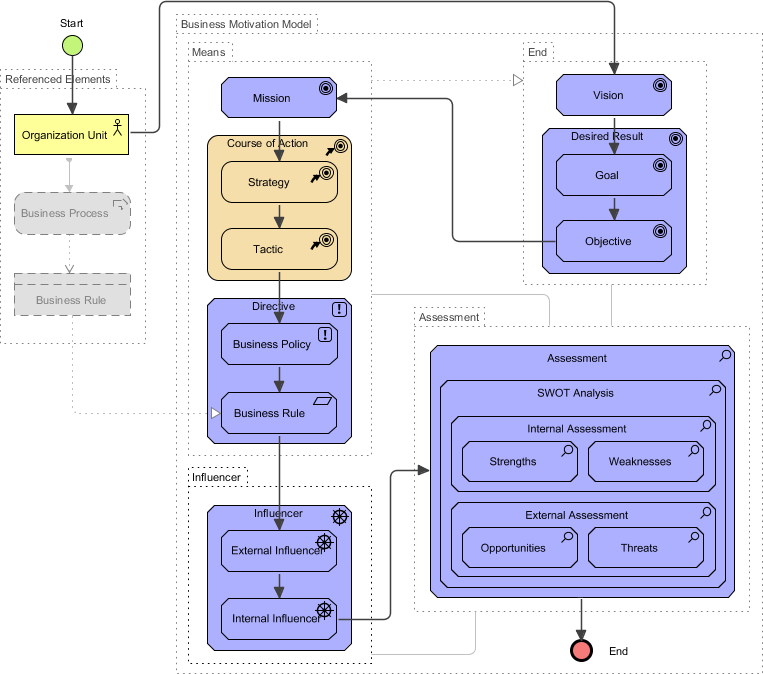
Zakres
Zakres BMM przedsiębiorstwa może obejmować całe przedsiębiorstwo lub jedną z jednostek organizacyjnych. Poza granicami „przedsiębiorstwa” jednostki organizacyjne wyższego szczebla mogą wydawać się jednostkom niższego szczebla jako wpływające na organizację, a ich instrukcje mogą mieć status regulacyjny. BMM przedsiębiorstwa nie musi reprezentować całego przedsiębiorstwa. Interesariusze mogą stworzyć częściowy widok BMM, cytując tylko te części biznesu, które są związane z ich odpowiedzialnością i uprawnieniami decyzyjnymi.
Zakończ
Na koniec definiuje, czym chce być przedsiębiorstwo ((to-be). Istnieją trzy poziomy:
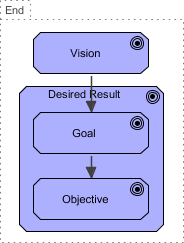
oznacza
Oznacza to zdefiniowanie decyzji, które przedsiębiorstwo musi podjąć, aby osiągnąć swoje cele. Istnieją trzy typy:
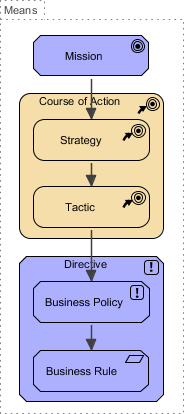
Influencer
Influencer to to, co firma decyduje, co może na nią wpłynąć. Istnieją dwie główne kategorie:
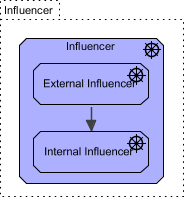
ocenić
Gdy influencer zmienia się znacząco, firma oceni jego wpływ i zidentyfikuje ryzyka oraz potencjalne korzyści. Może być wiele ocen, być może od różnych interesariuszy.
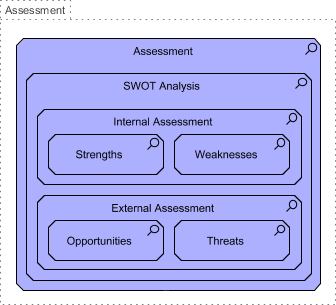
Planowanie strategiczne dla współpracy z BMM
Model Motywacji Biznesowej OMG (BMM) zapewnia doskonałą ramę do opracowywania, komunikowania i zarządzania planami strategicznymi. Ramy te odzwierciedlają powszechnie akceptowane techniki planowania strategicznego i pomagają określić strategiczne czynniki i cele strategiczne w twoim planowaniu strategicznym.
Proces doradczy w planowaniu strategicznym BMM
Na początek krzywa uczenia się przy wdrażaniu BMM może być nieco stroma. Powiązania między elementami są trudne do utrzymania i wizualizacji, dlatego pojawia się proces doradczy BMM.
BMM Guide-Through zapewnia ogólny proces, który pomoże Ci w opracowaniu modelu motywacji biznesowej. Poprzez stopniowy proces zostaną określone podstawowe komponenty planowania strategicznego. Informacje wynikowe będą automatycznie archiwizowane w formie dokumentu.
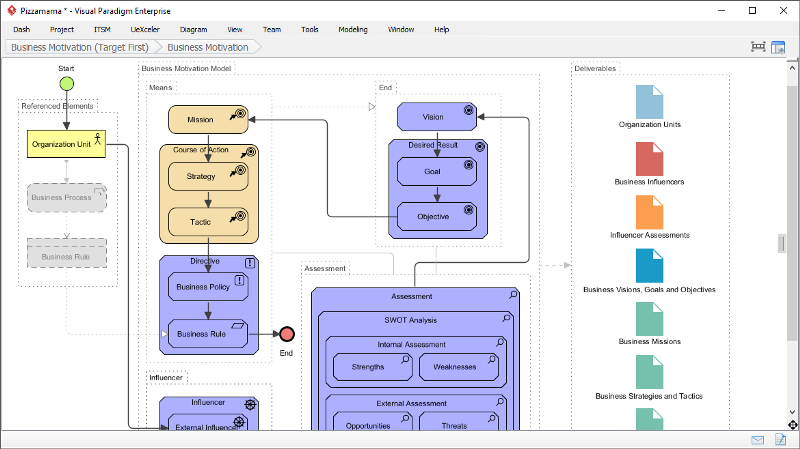
Korzyści z procesu coachingowego BMM:
- Struktura podzielona na działania i kroki, z wbudowanymi instrukcjami i przykładami
- Wskaźnik postępu pokazujący Twoją lokalizację i status realizacji działań i kroków
- Zapytaj i zwizualizuj strukturę oraz informacje o złożonych elementach w diagramach ArchiMate
- Wykonuj pracę i automatycznie generuj wyniki i raporty
- Automatycznie przepisuj dane z jednego kroku do drugiego, aby wykonać dalsze operacje lub przeprowadzić różne formy analizy, aby zapewnić spójność między elementami.
Ten post dostępny jest również w Deutsch, English, Español, فارسی, Français, Bahasa Indonesia, 日本語, Portuguese, Ру́сский, Việt Nam, 简体中文 and 繁體中文













